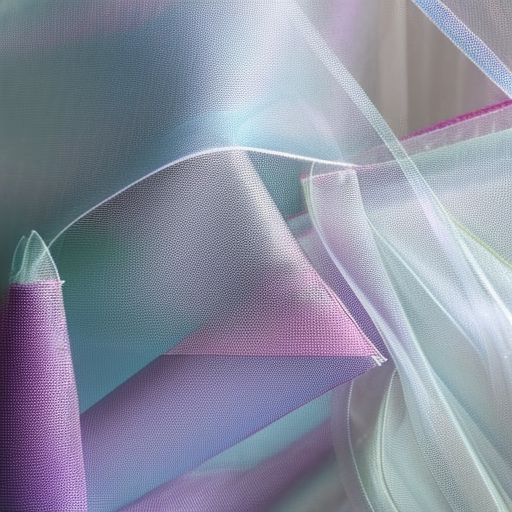If you are a sewing enthusiast looking to work with organza fabric, it’s important to know a few tips and tricks to ensure a successful outcome. Organza is a lightweight and sheer fabric that can be quite delicate, so handling and sewing it properly is essential. Here are some valuable tips to help you achieve professional-looking results:
1. Use a sharp needle
When sewing organza, it’s crucial to use a sharp needle, preferably a Microtex or a sharp universal needle with a size suitable for the weight of the organza fabric. A sharp needle will create tiny holes, minimizing the chances of the fabric snagging or fraying during the sewing process.
2. Select the appropriate thread
Choosing the right thread is vital for sewing organza. Opt for lightweight, fine threads that blend well with the color of the fabric. Polyester threads are often recommended as they provide strength and durability without adding excessive weight to the delicate organza.
3. Use a fine stitch length
When sewing organza, a smaller stitch length is preferable. A shorter stitch length helps to secure the fabric properly and prevents the seams from unraveling or distorting. Experiment on scrap fabric to determine the ideal stitch length for your specific project.

4. Consider French seams
If you want to achieve a neat and clean finish on the inside of your organza garment or project, consider using French seams. French seams enclose the raw edges, reducing fraying and providing a polished look. This technique is especially useful if the fabric is prone to fraying.
5. Apply minimal tension
When working with organza, adjust your sewing machine’s tension to a lower setting. This will prevent the fabric from puckering and gathering while you stitch. Test the tension on scrap fabric to find the best setting before sewing on your actual project.
6. Use presser feet and tools
Using the appropriate presser foot can make a significant difference when sewing organza. A straight-stitch foot or a Teflon foot minimizes the chances of the fabric getting caught or snagged. Additionally, having tools like a fabric stabilizer, tissue paper, or washaway stabilizer can help provide extra support and prevent the fabric from shifting during sewing.
7. Take your time and practice
Sewing with organza may require patience and practice, particularly if you are new to working with delicate fabrics. Take your time, go slowly, and practice on scraps to familiarize yourself with the techniques before working on your final project.
By following these sewing tips, you’ll be able to handle and sew organza fabric with confidence, creating stunning garments or beautiful projects that showcase the ethereal beauty of this delicate fabric.




